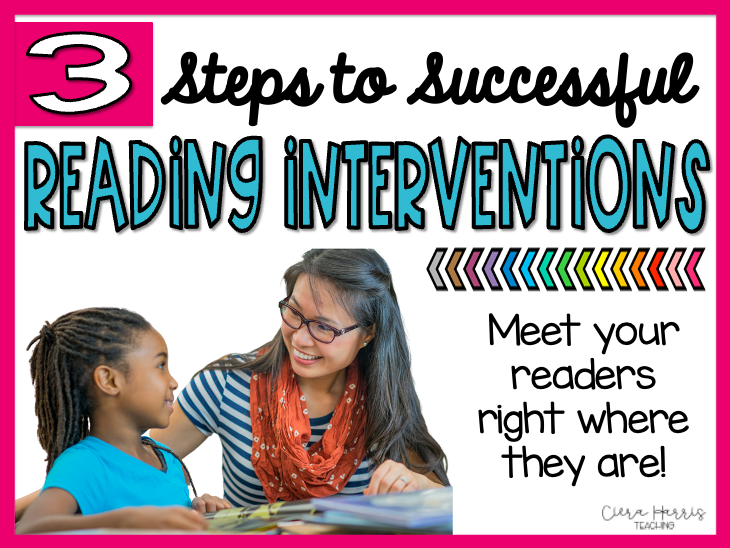Independent reading is one of the most important parts of your daily routine. Without it, students don’t have the time or ability to actually put into practice what they are being taught to do. How do you perfect a craft without having time to practice? But implementing independent reading is much more than finding time in your schedule. Let’s chat about perfecting our independent reading time and how we can make it work for us and our students.

Want to watch the video instead? Check it out below! Make sure to subscribe to get updates on all new content!
Independent Reading Priorities
First and foremost, independent reading has to be made a priority. This means it NEVER gets canceled. And yes, I said never! Too many times we have things that pop up. Oh, we have a special guest coming to speak today, class, so we won’t be having independent reading time. Or, class – we have a special ceremony in the gym today. My favorite is, class – math (or writing) went over time today, so we won’t have time for our independent reading.
This can’t happen! This sends the message that reading for fun independently is easily dismissable and replaceable. It shows the students that other parts of our day are more important. We need to send the signal that no matter what happens in our day, our reading is a coveted time and won’t be disrupted for any reason! It’s a time for all of us to enjoy, cherish, and love.
Reading Stamina is NOT a Thing
Yes, I said it. You have been tricked! Reading stamina is a facade to teach students that they have to love every book that is put into their hands. I completely understand teaching attention stamina in younger grades. This is needed. But reading stamina, not so much.
Why? Because with the RIGHT book in the RIGHT reader’s hands, reading stamina won’t be a problem. You won’t need to teach the student to focus and keep their attention for 21 minutes to fill in the chart. The stamina will come naturally. It will come from a place of want. So if a student is unable to hold their stamina, it most likely isn’t the student – it’s the book. Be relentless about changing the book to help find the right book for the right reader. THIS is so important!
Ways to Make Independent Reading Work
- Every choice is a good choice. Let the readers read what they WANT! It doesn’t matter if it is a cookbook, graphic novel, a how-to book, or a wordless picture book. Reading is reading. To take away or limit students’ choices is quite possibly hindering their love of reading.
- Teach real vs. fake reading. Your students need to know what reading is. We cannot assume, even in higher grades, that students know what ‘reading’ is. Teach them what real reading is and what fake reading is. Have these conversations at the beginning of the year and quite often throughout the year to ensure your students know your expectations.
- Teach reading voices. Reading voices are a fantastic way of explaining ‘thinking’ to students. Students, just like we do, hear voices in their heads when they read. This voice falls into one of three categories. #1 – Distracting voice. And this voice is distracting us from our reading and our thinking. #2 – Interacting Voice. This voice is the voice we hear when we read the words, captions, and text in the book. And #3 – Reacting Voice. This voice is our thinking about the text voice. It’s the voice we hear when we stop and ask questions, clarify our thinking, etc. Teaching these three voices can help distinguish which type of ‘thinking’ students should be experiencing when reading.
- Get rid of recording sheets and logs. Yes, this too can hinder your students’ love of reading. What’s the purpose? Accountability? There are better ways to hold our students accountable for the books that they read! So instead of reading for enjoyment, we are now reading to fill in boxes and make a quota. Get RID of those logs!
- Create a flexible seating option. This doesn’t mean you need to go out and buy flexible seating furniture. It just means to allow students to be comfortable when reading. Let them find a cozy spot on the floor. Or let them sit how they want in the chair! Comfort is super important to engagement when reading!
- Make it fun! Implement things such as book talks to help motivate and encourage your readers to read new and fun material you can in your library!
I have some super fun templates to help make independent reading come to life! Enter your name and email below to snag them straight to your inbox for FREE

Ways to Hold Students Accountable During Independent Reading
I know we all feel like we have to make sure everyone is doing what they are told. It’s not fair that one student is reading and another isn’t. But there are right and wrong ways to go about this. Things like taking tests on Accelerated Reader and filling out reading logs are not the right way. These all put a completely negative emphasis on WHY we are reading the book. It shows the student that we are reading to take a test and fill out boxes. Instead, we want to put into place ways that keep reading for the love of reading at the core but still hold students accountable. Here are some ideas!
- Implement “status of the class”. This is a fun routine that only takes a few minutes of the day! Basically, you give each student 15-20 seconds to update you and the class on what they are reading. If they are reading a picture book, tell them about it. And if they are reading a chapter book, tell them where they are and what’s going on. If students know that this is a daily expectation that you are GOING to ask of them, then they will do the reading! I have a fun ‘status of the class’ template that you can snag above to get you started!
- Ask questions that focus on the reader. This means that we need to have conversations with students and ask what they are getting out of the books they are reading. What are their responses to the books they have read? What are their thoughts? How did the book change their thinking? How did the book impact them? If you HAVE to do a daily log of some sort – these are the questions to be asking! They help to show the reader that THEY are at the heart of reading.
- Use daily independent reading time as a time to conference with students. If you’re giving your students 10-15+ minutes a day to read, then this time is perfect for meeting 1:1 with your students to just listen to them read and talk about the book with NO agenda! At this time, each day, you can get to everyone in your class at least once per week if not more! Use the fun bookmarks in the picture above to help set goals and communicate them with your students!
Independent reading time is such a valuable time of the day. But making it WORK takes thinking, action, and intentionality behind it. Take time to reflect on how you can make your independent reading time even better! Want to save this post for later? Make sure to pin the image below!





